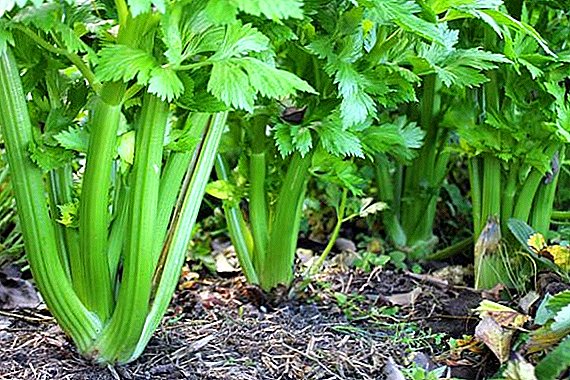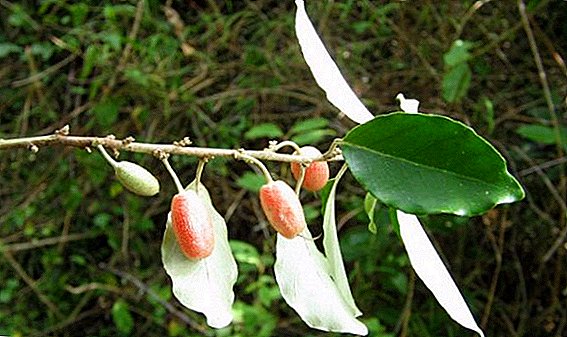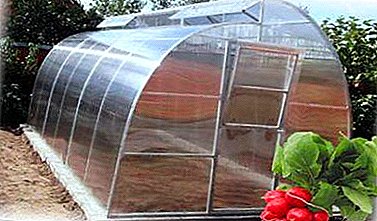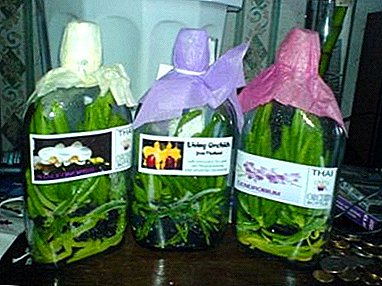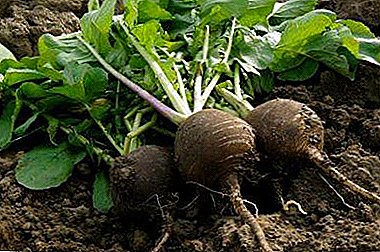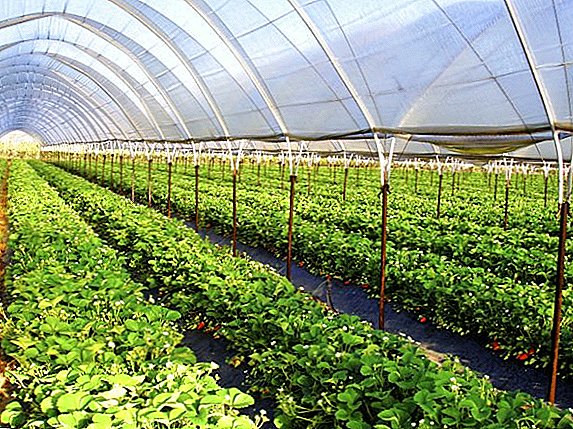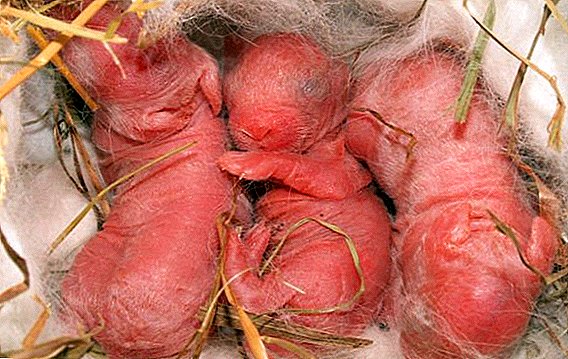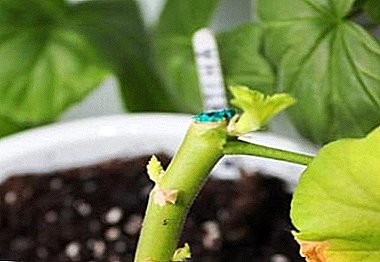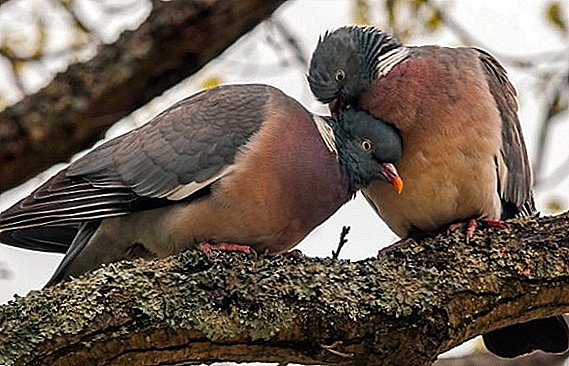 Nowadays, pigeons are permanent residents of both small cities and large megalopolises. Someone feeds them, someone does not love, and children are delighted with them. But let's talk about wild pigeons that live in nature and almost never come into contact with humans.
Nowadays, pigeons are permanent residents of both small cities and large megalopolises. Someone feeds them, someone does not love, and children are delighted with them. But let's talk about wild pigeons that live in nature and almost never come into contact with humans.
Description and appearance
Wild wood dove Pigeon belongs to the order Pigeon, the Golubin family and belongs to the form Columba palumbus.  The appearance of these birds is as follows:
The appearance of these birds is as follows:
- color - the plumage of the wood pigeon is gray-bluish, which is very convenient for camouflaging in the wild. Although there are reddish feathers on the chest, and the neck is greenish with a metallic sheen. On a sunny day, it looks very beautiful;
- weight - in comparison with their relatives from the cities, wild pigeons are much larger, their weight can reach one kilogram. Cases were also recorded when the living mass of the Viola was approaching the mark of 1.5 kg;
- body - it is quite natural that, having such an impressive weight for a bird, the body length from head to tail is more than 40 cm;
- wings - wingspan in flight reaches 80 cm. When the bird flies, you can observe beautiful white stripes that cross the wings across. Due to the large wingspan, the flight speed of the wood pigeon can reach 180 km / h. During seasonal migrations, birds quietly cover distances of up to a thousand kilometers without stopping;
- tail - small, but in the process of flight it dissolves, and from the bottom you can also see a distinctive white transverse band;
- head - small size with a nice ash color;
- eyes - have the form of a circle, black pupils. The rim around the pupil is yellow;
- beak - at the base is red, curved. The tip is sharp, yellowish;
- neck - has a metallic sheen, gracefully curved, on the sides in the plumage there are two white distinctive spots;
- paws - thin, pinkish-red with small, but sharp enough claws, so that the bird can easily hold on to the branches.




The plumage of chicks in the first weeks of life is not much like an adult. The color of the kids is dirty gray. Only when a bird grows does it acquire all the attractive features of its appearance.
Important! Ringdove - the largest of wild wood pigeons and lives exclusively in the forest.
Where live and how much live
The territory of distribution of these birds is very extensive. Vyakhira can be found in the coniferous forests of Scandinavia, the Baltic States, Ukraine and Russia, although in the summer they tend to the south, therefore their population in the Caucasus and Crimea increases. You can also meet them in northwestern Africa.  Most often these birds lead sedentary lifestyle. For permanent habitat choose forests, where there are coniferous or deciduous trees, although they fly to the fields for food. This is due to the fact that wheat and cereals for them - the best delicacy. But the marshland they do not like. Only as a last resort, wood pigeon can settle on the outskirts of the swamp.
Most often these birds lead sedentary lifestyle. For permanent habitat choose forests, where there are coniferous or deciduous trees, although they fly to the fields for food. This is due to the fact that wheat and cereals for them - the best delicacy. But the marshland they do not like. Only as a last resort, wood pigeon can settle on the outskirts of the swamp.
Did you know? North of Scotland there are Orkney Islands, where there are practically no trees. There, wild pigeons build up their nests right on the ground, and do not disdain crevices in the rocks.
By bird standards, there is a lot of pigeon lives: life expectancy can reach 16 years.
Lifestyles and habits
Like many members of the wild, wood pigeons prefer caution. This is due to the fact that the representatives of this species are rather helpless in front of large predators. Their advantage is speed. If there is a predator nearby, they become silent and freeze, so as not to give themselves away, because because of large wings they take out quite loud whistling sounds when taking off.  They don't like people either. They prefer to nest no closer than two kilometers from human settlements. Although there are exceptions, when Vihirs were seen in close proximity to people, but in the big cities they are almost never met. They love remote forests where they feel safe and can safely grow their offspring.
They don't like people either. They prefer to nest no closer than two kilometers from human settlements. Although there are exceptions, when Vihirs were seen in close proximity to people, but in the big cities they are almost never met. They love remote forests where they feel safe and can safely grow their offspring.
Between themselves, members of the pack are very sociable and energetic. Their flocks are rather big, the number of birds in one flock can reach several dozen individuals.
Did you know? Pigeons live all over the world, and many of them look very beautiful. For example, there are fruit pigeons, which surprise with their bright green, red and yellow feathers.
What to eat
Vyhirey could be called vegetarians if they did not eat sometimes earthworms and caterpillars. But they do it extremely rarely. Most of all they love to eat wheat or any cereal. Depending on the habitat in the diet of these birds may be present and cones, acorns, berries, herbs and nuts.  Interestingly, thanks to the claws on their paws, the wood pigeon can hold onto a branch, hanging upside down. Such bird tricks are done if there is a need to get a nut that is in a hard-to-reach place.
Interestingly, thanks to the claws on their paws, the wood pigeon can hold onto a branch, hanging upside down. Such bird tricks are done if there is a need to get a nut that is in a hard-to-reach place.
It is interesting to get acquainted with collections of pigeon species: colorful pigeons, the strangest pigeons in the world.
Breeding
Over the course of one year, the wood pigeon can give offspring up to 3 times This process begins, as a rule, in April. Just at this time the birds return after wintering. The season lasts right up to September.
Pair formation
Vyakhira puberty occurs in 10-11 months. It was then, to attract the attention of females, the males sit on the tops of the trees and begin to coo loudly. You can even say that their day begins with this, since they usually do it in the morning.  When the female pays attention to the male, he descends, circles around her and cooing constantly. The result of such mating games is egg laying.
When the female pays attention to the male, he descends, circles around her and cooing constantly. The result of such mating games is egg laying.
New Guinea is inhabited by very unusual pigeons - crowned. They have a rather large size and exquisite tuft.
Nest arrangement
But before you hatch eggs, you need to build a suitable nest. Vihyri are very responsive to this issue. Before using the twig in construction, the bird carefully examines it through its beak. And only if the quality of the material is satisfactory - the twig will fall into the nest.  At the same time the speed of creating a nest is impressive. All takes just a couple of days. The structure is as follows: a thicker and stronger branch creates a frame, between which branches more flexible branches of a smaller size are woven. The result is a flat bottom and a loose cocoon with a small number of holes between the branches.
At the same time the speed of creating a nest is impressive. All takes just a couple of days. The structure is as follows: a thicker and stronger branch creates a frame, between which branches more flexible branches of a smaller size are woven. The result is a flat bottom and a loose cocoon with a small number of holes between the branches.  Nyagi nests are located at a height of not more than 2 meters from the ground. And very lazy can use the remains of nests of other birds, for example, crows, forty and falcons.
Nyagi nests are located at a height of not more than 2 meters from the ground. And very lazy can use the remains of nests of other birds, for example, crows, forty and falcons.
Important! Since the wood pigeon is the largest representative of its species, its meat is very valuable. As a result, the danger to these birds comes not only from predators, but also from people for whom hunting is of considerable interest.
Hatching eggs
As a rule, a female pigeon can lay two eggs at a time. They are small in size, painted white.  Hatching eggs occurs over two and a half weeks. At this stage, both female and male take an active part. After this time, chicks hatch from eggs. For the first time (about four weeks), babies feed exclusively on the curd-like secretions of the parents' goiter, and then gradually get used to other types of food that are typical of adults.
Hatching eggs occurs over two and a half weeks. At this stage, both female and male take an active part. After this time, chicks hatch from eggs. For the first time (about four weeks), babies feed exclusively on the curd-like secretions of the parents' goiter, and then gradually get used to other types of food that are typical of adults. 
Care for offspring
Vyahi - quite caring parents, but no less rational. They feed the chicks, teach them to fly, and 5-6 weeks after laying their eggs, the young pigeons are already quite ready for independent living, and leave the nest.
Find out why pigeons nod their heads when walking; where do the pigeons hide and look like; what can you get from pigeons.
Video: wild wood pigeon pigeon
So is the life of wild birds away from human settlements. This bird is a desirable prey for many hunters, because its meat has delicacy properties.


